Douglas fir is one of the world’s best-known timber species. Imported sawn timber products are readily available in Australia.
Oregon Fir, Oregon Pine, Oregon, Green Douglas Fir, Blue Douglas Fir, Columbian Pine, Common Douglas, Coast Douglas Fir
Pseudotsuga menziesii
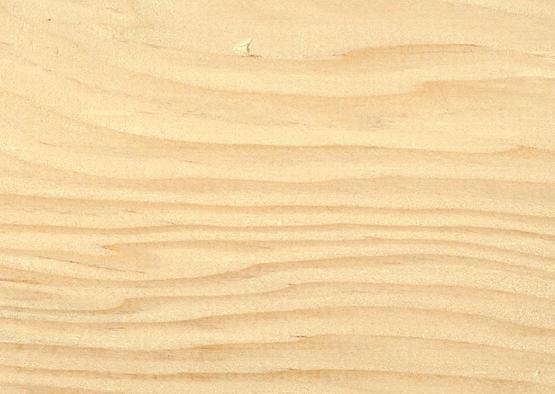
Douglas fir is one of the world’s best-known timber species. Native to the west coast of North America, it is forested extensively in timber plantations throughout Europe, New Zealand and South America – regions where the species has become naturalised. Sawn timber from this species is readily available in Australia.
The heartwood of Douglas fir ranges in colour from yellow through orange to a deep reddish brown. Sapwood is often distinctively paler, occurring in a band from 50 to 75 millimetres in width, depending on the timber’s source. Grain is generally straight, with a pronounced difference in colour between earlywood and latewood that results in a highly distinctive figure on back-sawn surfaces. Texture is often coarse and uneven.
The timber machines and turns well, but planer blades must be kept sharp in order to avoid surface ridging. Care is required with the use of standard fastenings and fittings, as nails may tend to follow the timber’s growth rings. Douglas fir can be satisfactorily bonded using standard glues and procedures. Due to the timber’s high resin content and occasional earlywood–latewood ridging of the dressed product, care is required in selecting timber for finishing applications and in preparation of surfaces for paints and varnishes.
Douglas fir is only moderately durable, and both sapwood and heartwood resist impregnation with preservatives. The timber lacks termite-resistance and sapwood is susceptible to lyctid borer attack.
Douglas fir is commonly found as sawn timber in weather-protected heavy construction applications such as mining timbers, posts and poles. Treated pilings and boards are used in marine structures and for landscaping. Other common applications include general house framing, flooring, lining, fascias, bargeboards and pergolas. It is also used in joinery, turnery, carving and plywood.
Shrinkage
| Very Low | Low | Medium | High | Very High | |
|---|---|---|---|---|---|

|

|

|
|||
Tangential : |
4.60%
|
||||
Radial : |
2.60%
|
||||
Unit Movement Tangential: |
0.26%
|
||||
Unit Movement Radial: |
0.15%
|
Strength Group

Very High |
High |
Reasonably High |
Medium High |
Medium |
Reasonably Low |
Low |
Very Low |
||
Unseasoned: |
S1 |
S2 |
S3 |
S4 |
S5 |
S6 |
S7 |
S8 |
|
|---|---|---|---|---|---|---|---|---|---|
 |
|||||||||
Seasoned: |
SD1 |
SD2 |
SD3 |
SD4 |
SD5 |
SD6 |
SD7 |
SD8 |
|
 |
Stress Grade

| Structural No. 1 |
Structural No. 2 |
Structural No. 3 |
Structural No. 4 |
Structural No. 5 |
|
Unseasoned: |
F11 |
F8 |
F7 |
F5 |
F4 |
Seasoned: |
F14 |
F11 |
F8 |
F7 |
F5 |
Density per Standard

Seasoned: |
550kg/m3
|
|---|---|
Unseasoned: |
700kg/m3
|
Joint Group

Very High |
High |
Reasonably High |
Medium |
Low |
Very Low |
|
Unseasoned: |
J1 |
J2 |
J3 |
J4 |
J5 |
J6 |
|---|---|---|---|---|---|---|
 |
||||||
Seasoned: |
JD1 |
JD2 |
JD3 |
JD4 |
JD5 |
JD6 |
 |
Colour

| White, yellow, pale straw to light brown | Pink to pink brown | Light to dark red | Brown, chocolate, mottled or streaky | |
 |
||||
Mechanical Properties
Modulus of Rupture - Unseasoned: |
47-53
|
|---|---|
Modulus of Rupture - Seasoned: |
82-90
|
Modulus of Elasticity - Unseasoned: |
8-11.1
|
Modulus of Elasticity - Seasoned: |
10.3-13.6
|
Maximum Crushing Strength - Unseasoned:  |
21.4-26.7
|
Maximum Crushing Strength - Seasoned: |
43.0-51.3
|
Impact - Unseasoned: |
|
Impact - Seasoned: |
|
Toughness - Unseasoned: |
Low - up to 15 Nm
|
Toughness - Seasoned: |
Low - up to 15 Nm
|
Hardness - Unseasoned: |
2.10- 2.2
|
Hardness - Seasoned: |
3.0 - 3.6
|
Durability
| Low | Moderate | Reasonably High | High | |
| (0 - 5 yrs) | (5 - 15 yrs) | (15 - 25 yrs) | (more than 25 yrs) | |
In-Ground: |
 |
|||
| (0 - 7 yrs) | (7 - 15 yrs) | (15 - 40 yrs) | (More than 40 yrs) | |
Above ground: |
 |
|||
| (0 - 20 yrs, usually < 5) | (21 - 40 yrs) | (41 - 64 yrs) | (More than 60 yrs) | |
Marine Borer Resistance: |
 |
Lyctid Borer Susceptibility: |
Not Susceptible |
|---|---|
Lyctid Borer Susceptibility - Other: |
|
Termite Resistance: |
Not Resistant
|
Fire Properties
| 0 | 1 | 2 | 3 | 4 | 5 | 6 | 7 | 8 | 9 | 10 | 11 | 12 | 13 | 14 | 15 | 16 | 17 | 18 | 19 | 20 | |
EFH Ignitibility: |
| 0 | 1 | 2 | 3 | 4 | 5 | 6 | 7 | 8 | 9 | 10 | |
EFH Spread-of-Flame Index: |
|||||||||||
EFH Smoke-Developed Index: |
| 1 - non-combustible | 2 - reasonably non-combustible | 3 - slightly combustible | 4 - combustible | |
Fire Properties Group |
Group Number - Other: |
3 if used on MDF or particleboard ≥12mm; veneer thickness 0.6-0.85mm
|
|---|---|
Average Specific Extinction Area: |
< 250
|
Bushfire Resistance: |
Not Tested
|
The heartwood of Douglas fir ranges in colour from yellow through orange to a deep reddish brown. Sapwood is often distinctively paler, occurring in a band from 50 to 75 millimetres in width, depending on the timber’s source. Grain is generally straight with a pronounced difference in colour between earlywood and latewood that results in a highly distinctive figure on back-sawn surfaces. Texture is often coarse and uneven.
Douglas fir is commonly found as sawn timber in weather-protected heavy construction applications such as mining timbers, posts and poles. Treated pilings and boards are used in marine structures and for landscaping. Other common applications include general house framing, flooring, lining, fascias, bargeboards and pergolas. It is also used in joinery, turnery, carving and plywood.
The timber machines and turns well but planer blades must be kept sharp in order to avoid surface ridging. Care is required with the use of standard fastenings and fittings, as nails may tend to follow the timber’s growth rings. Douglas fir can be satisfactorily bonded using standard glues and procedures. Due to the timber’s high resin content and occasional earlywood–latewood ridging of the dressed product, care is required in selecting timber for finishing applications and in preparation of surfaces for paints and varnishes.
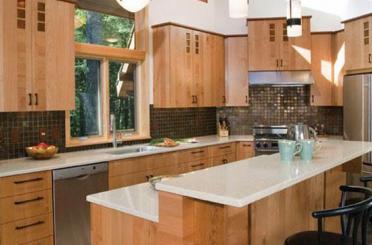
Joinery
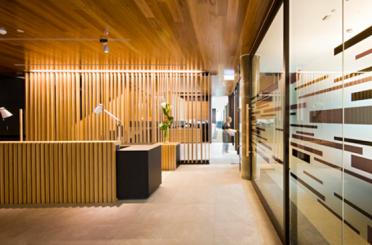
Panelling, Interior
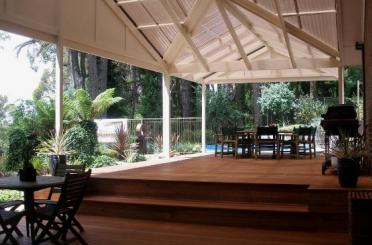
Pergolas
Framing
Allied Forest Products

Allmat Timber

ATS Building Products
Austim Pty Ltd
Australian Timber

Branches Timbercraft

Briggs Veneers Pty Ltd
Dekhar Outdoors

Garde Timber Pty Ltd

HESS TIMBER GmbH

Matilda Veneer

Meyer Timber Pty. Ltd.

Ridgewood Timber Pty Ltd

Stora Enso Australia
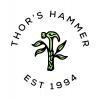
Thor’s Hammer

Tilling Timber

Timber Blitz Pty Ltd




